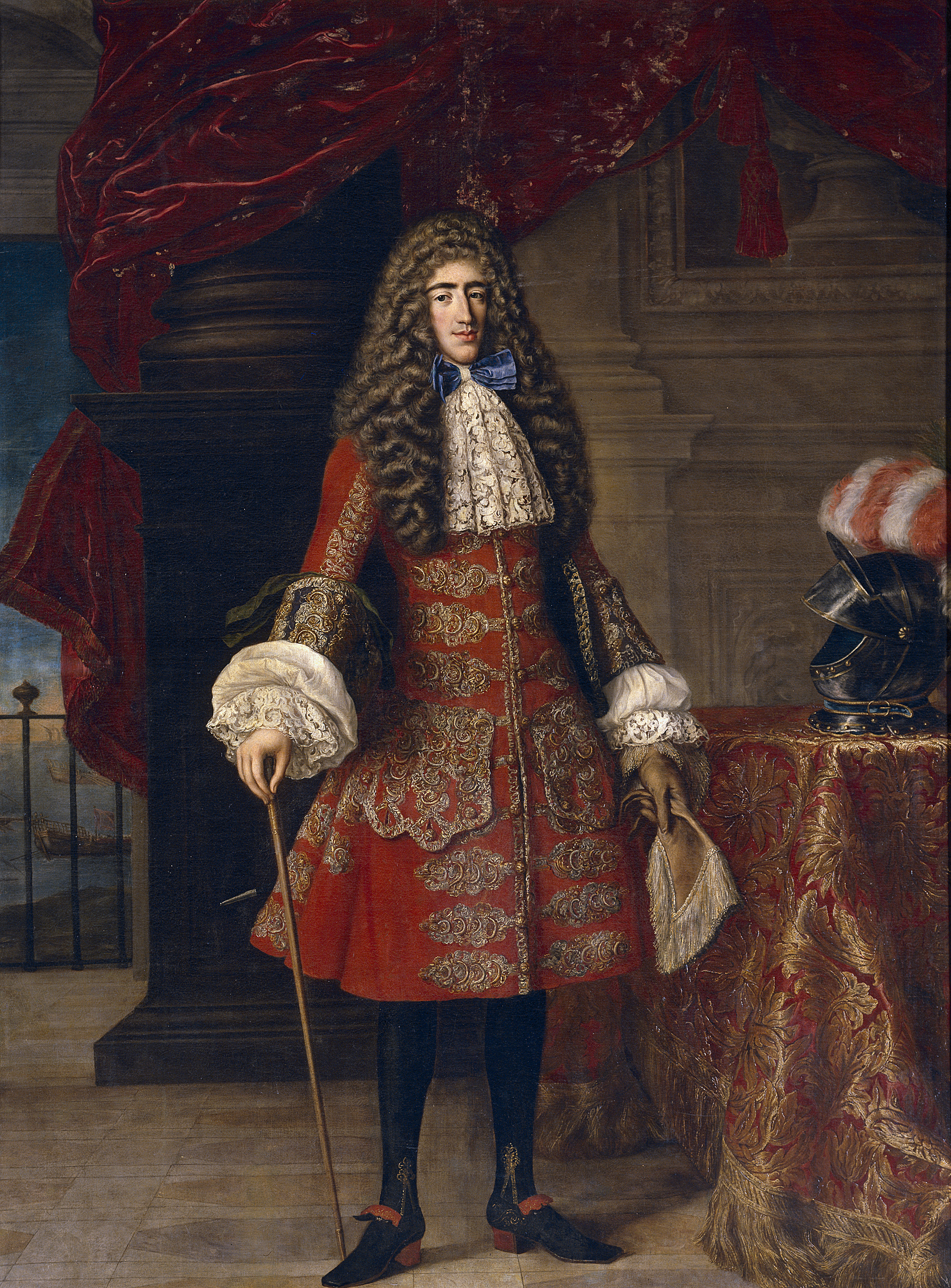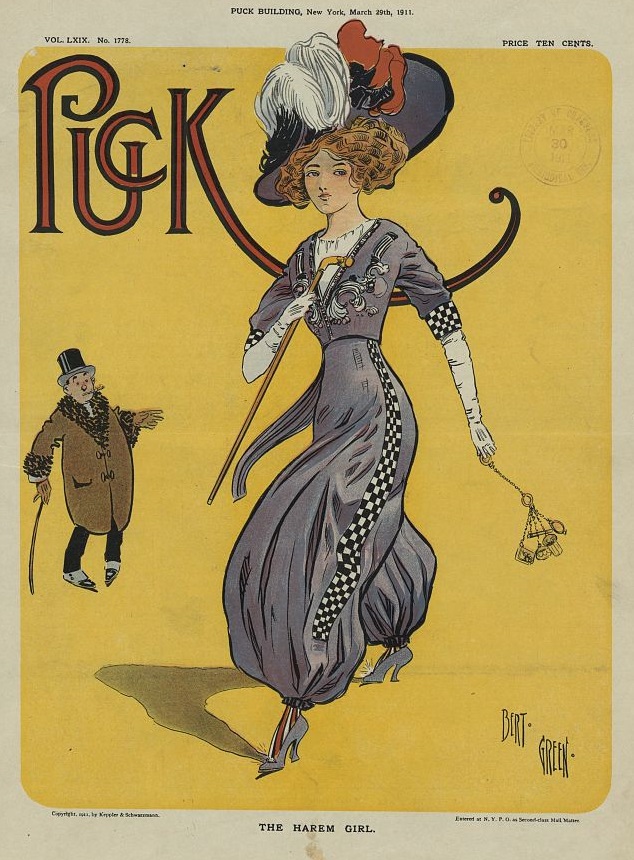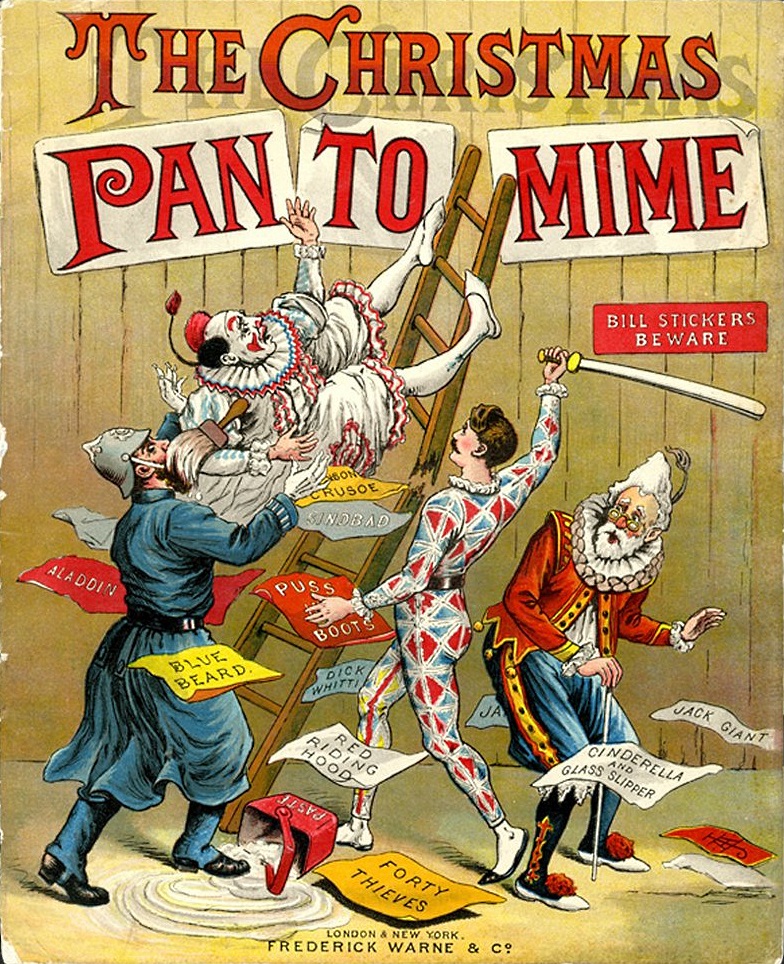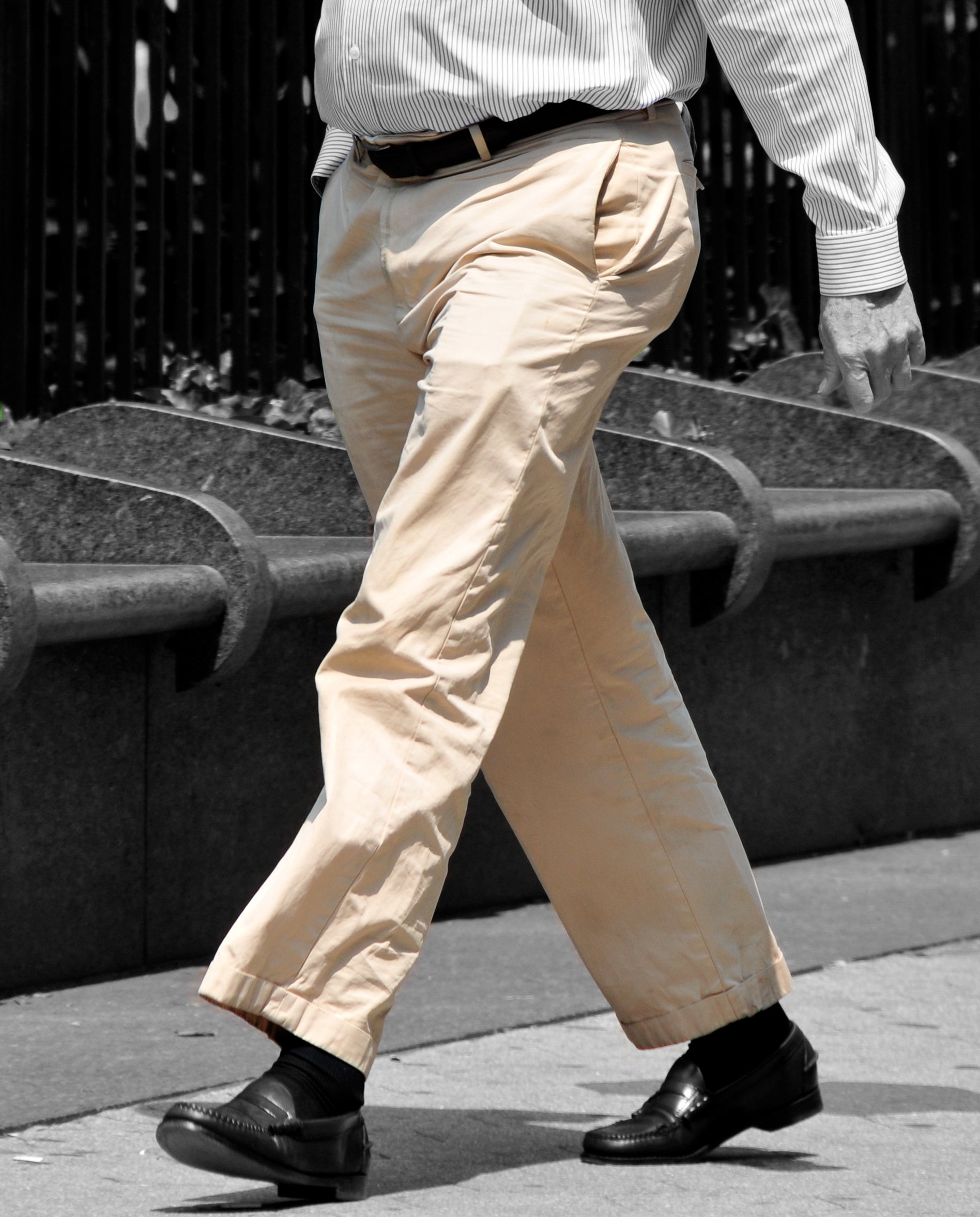|
Baggy Jeans
Wide-leg jeans, colloquially called baggy pants, are a style of clothing that were popular from the early 1990s to the early 2010s. The quintessential brand of " hip-hop"-style wide-leg jeans comes from the Los Angeles–based JNCO ("Judge None Choose One"), although other youth- and ethnic-oriented clothing companies manufacture them as well. History Historically, the cut of pants has varied by period. From the 1500s until the early 17th century, very loose fitting breeches and hosen were fashionable among the wealthy. Frequently, these galligaskins, trunk hose and Rhinegraves had slits to reveal a contrasting fabric lining, and were paired with short doublet or jerkin. These were replaced with tighter breeches and justacorps frock coats during the 1660s, which remained in fashion until long pantaloons were introduced during the 1788 French Revolution and Georgian Regency era. Baggy pantaloons (named after Pantalone from the Harlequinade) were originally work clothing, an ... [...More Info...] [...Related Items...] OR: [Wikipedia] [Google] [Baidu] |
Madness (band)
Madness are an English ska and pop band from Camden Town, North London, who formed in 1976. One of the most prominent bands of the late 1970s and early 1980s two-tone ska revival, they continue to perform with six of the seven members of their original line-up.Erlewine, Stephen Thomas. Retrieved on 19 June 2007. Madness's most successful period was from 1980 to 1986, when the band's songs spent a total of 214 weeks on the UK Singles Chart. (UB40 shared the same number of weeks, the largest for any British group in the decade, but over a longer period.), IMDb.com, Retrieved on 10 June 2007. Madness have had 15 singles reach the UK top ten, including "One Step Beyond", "Baggy Trousers" and " It Must Be Love", one UK number-one single "House of Fun" and two number ones in Ireland, "House of Fun" and " Wings of a Dove". " Our House" was their biggest US hit, reaching number 7 on the ''Billboard'' Hot 100. In 2000, the band received the Ivor Novello Award from the British Academy ... [...More Info...] [...Related Items...] OR: [Wikipedia] [Google] [Baidu] |
Justacorps
A justacorps or justaucorps () is a knee-length coat worn by men in the latter half of the 17th century and throughout the 18th century. The garment is of French origin, and was introduced in England as a component of a three-piece ensemble, which also included breeches and a long vest or waistcoat. This ensemble served as the prototype of the frock coat, which in turn evolved into the modern-day three-piece suit. The fabric selection and styling of the justacorps varied throughout time periods, as fashions frequently altered. Development In 1666, Charles II of England reset men's fashion in England by introducing a new garment, referred to as a vest or waistcoat. The vest was knee-length, worn in conjunction with breeches and an overcoat of equal length. The coat became known as the justacorps or cassock due to its similarity to the vestments worn by priests. This outfit is thought to be the prototype of the modern day men's three-piece suit. This outfit seems to have been a plai ... [...More Info...] [...Related Items...] OR: [Wikipedia] [Google] [Baidu] |
Folk Costume
A folk costume (also regional costume, national costume, traditional garment, or traditional regalia) expresses an identity through costume, which is usually associated with a geographic area or a period of time in history. It can also indicate social, marital or religious status. If the costume is used to represent the culture or identity of a specific ethnic group, it is usually known as ethnic costume (also ethnic dress, ethnic wear, ethnic clothing, traditional ethnic wear or traditional ethnic garment). Such costumes often come in two forms: one for everyday occasions, the other for traditional festivals and formal wear. Following the rise of romantic nationalism, the pre-industrial peasantry of Europe came to serve as models for all that appeared genuine and desirable. Their dresses are crystallized into so-called "typical" forms, and enthusiasts adopted that attire as part of their symbolism. In areas where Western dress codes have become usual, traditional garments ar ... [...More Info...] [...Related Items...] OR: [Wikipedia] [Google] [Baidu] |
Sharovary
Sharovary (''ir. sharavara'', pers. شلوار -''shalvar'') are a kind of men's pants, part of the national clothes of Ukrainian Cossacks - are free to hips, often with assembly at the waist, collected at the bottom near the ankles. Similar pants in other cultures are Sirwal, Salwar, Shalwar kameez, etc. The presence of wide trousers in the territory of Ukraine designed for riding originate with the Scythians. Exposure to similar Turkish modes of dress would have occurred in battle on the steppes of Ukraine. The presence of sharovary in the dress of the Ukrainian Cossacks of Zaporizhia is noted by German ambassador Erich Lassota in the 16th century. A comprehensive description of Cossack dress is included in the publication of 1651 Description of Ukraine by Polish-enlisted French-born cartographer and military engineer Guillaume Le Vasseur de Beauplan. It lists the shirts, hats and kaptan of thick cloth that made up the Ukrainian Cossack everyday clothes. See also * Europ ... [...More Info...] [...Related Items...] OR: [Wikipedia] [Google] [Baidu] |
European Loose Trousers
The sirwal or shalwar forms part of traditional costume in some parts of Europe. Sharavary suits The salvar is known as sharavary in parts of Europe which is worn with any upper garment. In Ukraine, the sharavary is voluminous. In Circassia, women wear the sharavary with a long shirt. File:Народне вбрання Київської губернії 1.jpg, Ukraine Kat-haljina suit In Bosnia and Herzegovina and Montenegro, the salvar is known as the dimije which has a local style. The kat-haljina suit is a combination of a European style blouse and dimije made from the same material. Bulgaria The salvar and similar trousers are also worn in Bulgaria. File:Kiselovo-turkish.jpg, Kiselovo-turkish (Bulgaria) Schalwar/vraka In parts of Greece (such as Crete, the Greek islands and Cyprus Cyprus ; tr, Kıbrıs (), officially the Republic of Cyprus,, , lit: Republic of Cyprus is an island country located south of the Anatolian Peninsula in the east ... [...More Info...] [...Related Items...] OR: [Wikipedia] [Google] [Baidu] |
Shalwar Kameez
Shalwar kameez (also salwar kameez and less commonly shalwar qameez) is a traditional combination dress worn by women, and in some regions by men, in South Asia, and Central Asia. ''Shalwars'' are trousers which are atypically wide at the waist but which narrow to a cuffed bottom. They are held up by a drawstring or elastic belt, which causes them to become pleated around the waist. The trousers can be wide and baggy, or they can be cut quite narrow, on the bias. Shalwars have been traditionally worn in a wide region which includes Eastern Europe, West Asia, Central Asia, and South Asia. The ''kameez'' is a long shirt or tunic. The side seams are left open below the waist-line (the opening known as the ''chaak''), which gives the wearer greater freedom of movement. The kameez is usually cut straight and flat; older kameez use traditional cuts; modern kameez are more likely to have European-inspired set-in sleeves. The kameez may have a European-style collar, a Mandarin colla ... [...More Info...] [...Related Items...] OR: [Wikipedia] [Google] [Baidu] |
Harem Pants
Harem pants or harem trousers are baggy, long pants caught in at the ankle. Early on, the style was also called a harem skirt. The original so-called 'harem pants/skirts' were introduced to Western fashion by designers such as Paul Poiret around 1910, although they themselves were inspired by Middle East styles, and by şalvar (Turkish trousers). The term 'harem pants' subsequently became popular in the West as a generic term for baggy trousers caught in at the ankle that suggest the Turkish style, or similar styles such as bloomers, the South Asian shalwar and patiala salwar; the Bosnian dimije; sirwal (as worn by Zouaves); and the Ukrainian sharovary. Early 20th century In 1911 the Paris couturier Paul Poiret introduced harem pants as part of his efforts to reinvent and 'liberate' Western female fashion. His "Style Sultane" included the ''jupe-culotte'' or harem pant, made with full legs tied in at the ankle. Alternative names for the harem skirt/pants included ''jupe-sultane' ... [...More Info...] [...Related Items...] OR: [Wikipedia] [Google] [Baidu] |
Ancien Régime
''Ancien'' may refer to * the French word for "ancient, old" ** Société des anciens textes français * the French for "former, senior" ** Virelai ancien ** Ancien Régime ** Ancien Régime in France {{disambig ... [...More Info...] [...Related Items...] OR: [Wikipedia] [Google] [Baidu] |
Sans-culottes
The (, 'without breeches') were the common people of the lower classes in late 18th-century France, a great many of whom became radical and militant partisans of the French Revolution in response to their poor quality of life under the . The word , which is opposed to "aristocrat", seems to have been used for the first time on 28 February 1791 by Jean-Bernard Gauthier de Murnan in a derogatory sense, speaking about a " army". The word came into vogue during the demonstration of 20 June 1792. The name refers to their clothing, and through that to their lower-class status: were the fashionable silk knee-breeches of the 18th-century nobility and bourgeoisie, and the working class wore ''pantaloons'', or long trousers, instead.Chisholm, Hugh (1911). "Sans-culottes". ''Encyclopædia Britannica'' (11th ed.), 1911. This saying meant "ordinary patriots without fine clothes", and referred to the fancy clothes that famous patriots wore. They wore pants with cuffed, rolled up bottoms ... [...More Info...] [...Related Items...] OR: [Wikipedia] [Google] [Baidu] |
Harlequinade
''Harlequinade'' is a British comic theatrical genre, defined by the ''Oxford English Dictionary'' as "that part of a pantomime in which the harlequin and clown play the principal parts". It developed in England between the 17th and mid-19th centuries. It was originally a slapstick adaptation or variant of the Commedia dell'arte, which originated in Italy and reached its apogee there in the 16th and 17th centuries. The story of the Harlequinade revolves around a comic incident in the lives of its five main characters: Harlequin, who loves Columbine; Columbine's greedy and foolish father Pantaloon (evolved from the character Pantalone), who tries to separate the lovers in league with the mischievous Clown; and the servant, Pierrot, usually involving chaotic chase scenes with a bumbling policeman. Originally a mime (silent) act with music and stylised dance, the harlequinade later employed some dialogue, but it remained primarily a visual spectacle. Early in its development, it ach ... [...More Info...] [...Related Items...] OR: [Wikipedia] [Google] [Baidu] |
Pantalone
Pantalone , spelled Pantaloon in English, is one of the most important principal characters found in . With his exceptional greed and status at the top of the social order, Pantalone is "money" in the commedia world. His full name, including family name, is ''Pantalon de' Bisognosi'', Italian for "Pantalone of the Needy".Robert Henke ''Performance and literature in the commedia dell'arte'', Improvisation and characters, Individual roles, pp. 19–24 Character Pantalone originated as part of a master/servant duo and was the original il Magnifico stock character. Carlo Goldoni, in his memoirs, named Pantalone as one of the four primary Commedia dell'Arte characters. Among other things, Pantalone is a character of Venetians; one theory is that his name derives from Saint Pantaleon (''San Pantalone''), a popular saint in Venice. Another theory is that his name derives from Venetian merchants who were called Piantaleoni. While the theories of the St Pantaleone and the lion of St Mark ... [...More Info...] [...Related Items...] OR: [Wikipedia] [Google] [Baidu] |
Trousers
Trousers (British English), slacks, or pants are an item of clothing worn from the waist to anywhere between the knees and the ankles, covering both legs separately (rather than with cloth extending across both legs as in robes, skirts, and dresses). In the United Kingdom, the word ''pants'' generally means underwear and not trousers. Shorts are similar to trousers, but with legs that come down only to around the area of the knee, higher or lower depending on the style of the garment. To distinguish them from shorts, trousers may be called "long trousers" in certain contexts such as school uniform, where tailored shorts may be called "short trousers" in the UK. The oldest known trousers, dating to the period between the thirteenth and the tenth centuries BC, were found at the Yanghai cemetery in Turpan, Sinkiang ( Tocharia), in present-day western China. Made of wool, the trousers had straight legs and wide crotches and were likely made for horseback riding. In most of Europe, ... [...More Info...] [...Related Items...] OR: [Wikipedia] [Google] [Baidu] |









